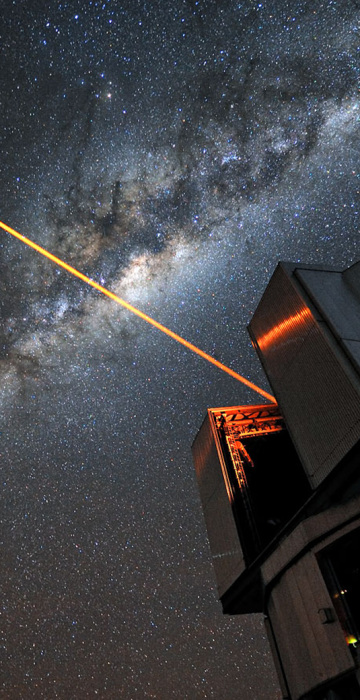
Science News
Month in space: November 2011

On the beam
A glowing laser shines forth from the European Southern Observatory’s Very Large Telescope in Chile, in a picture captured by ESO Photo Ambassador Gerhard Hüdepohl. The beam energizes sodium atoms high in Earth’s mesosphere, causing them to glow and creating a bright dot that looks like a star to observers on the ground. That artificial star serves as a guide for the telescope's adaptive optics system.
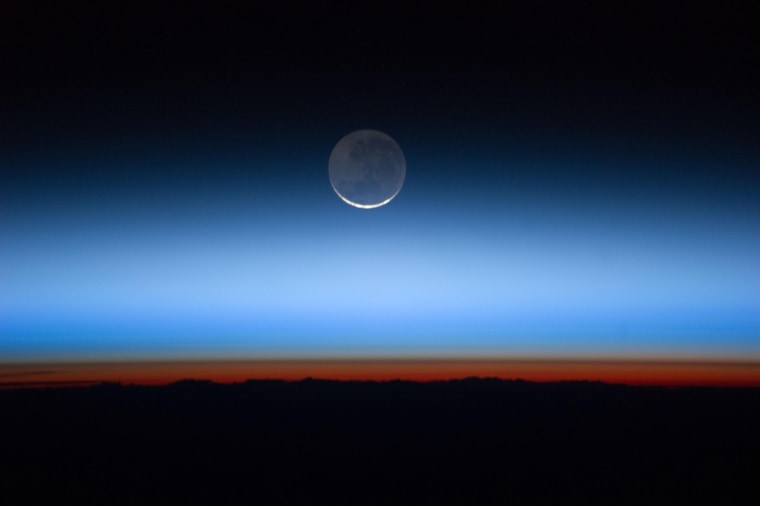
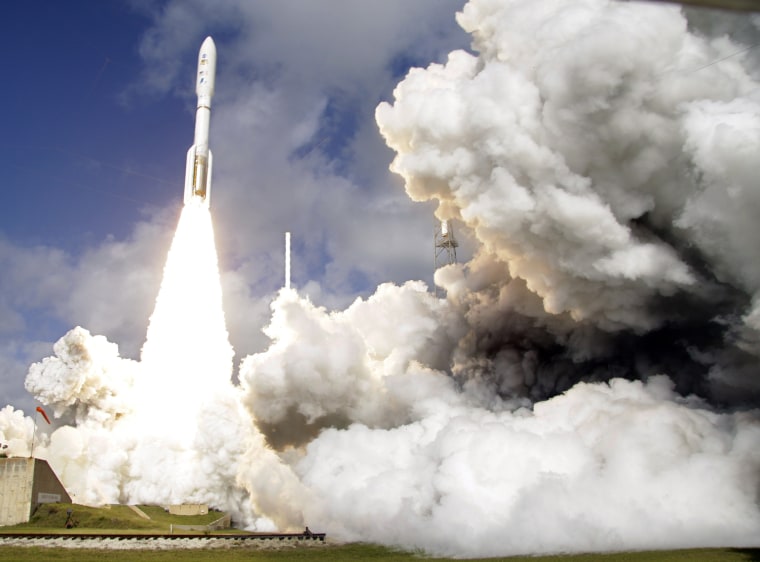
On to Mars!
An Atlas 5 rocket carrying NASA's Mars Science Laboratory lifts off from Launch Complex 41at Cape Canaveral Air Force Station in Florida on Nov. 26. The rocket sent the Curiosity rover on the first leg of a mission to study potentially habitable environments on the Red Planet.

After the landing
An aerial view shows vehicles with their headlights on converging on a Russian Soyuz spacecraft in northern Kazakhstan after its landing on Nov. 22. The capsule brought NASA astronaut Michael Fossum, Russian cosmonaut Sergey Volkov and Japanese astronaut Satoshi Furukawa back to Earth from the International Space Station.

Chilly homecoming
Ground personnel carry Japanese astronaut Satoshi Furukawa from a Russian Soyuz capsule minutes after landing near the town of Arkalyk in northern Kazakhstan on Nov. 22. Furukawa and two fellow spacefliers came down from the International Space Station to face freezing temperatures on the Kazakh steppes.
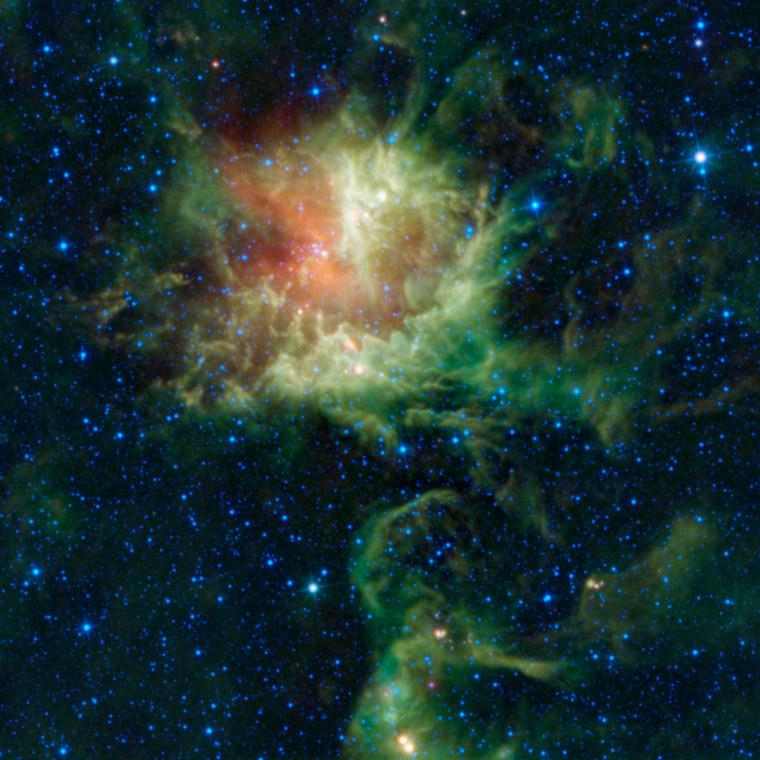
Does 'Pacman' have teeth?
In visible light, the star-forming cloud cataloged as NGC 281 in the constellation of Cassiopeia appears to be chomping through the cosmos. Astronomers nicknamed NGC 281 the "Pacman Nebula," after the famous Pac-Man video game of the 1980s. This infrared view from NASA's Wide-field Infrared Survey Explorer, released Oct. 26, reveals jagged rows of "teeth" that are actually pillars of interstellar dust.
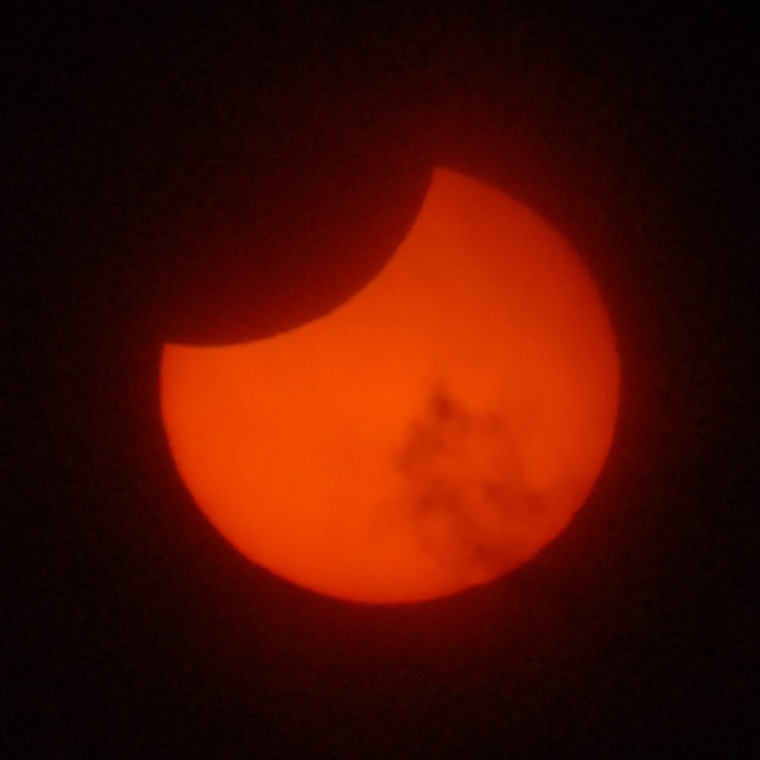
Southern exposure
The moon's disk takes a bite out of the sun during a partial solar eclipse, as seen from Invercargill in New Zealand on Nov. 25. The last of 2011's four solar eclipses was visible only from an area in southern latitudes taking in New Zealand, Tasmania, South Africa and Antarctica.
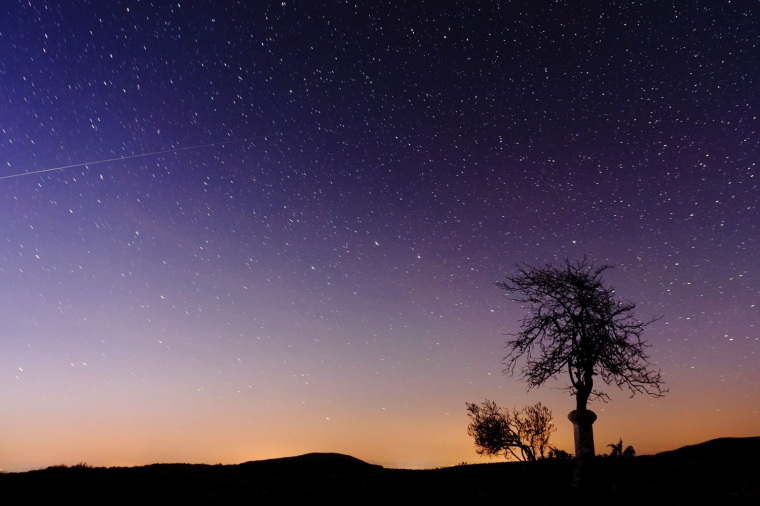
Trail of trouble
In a long-exposure photo, a bright trail marks the path of Russia's Phobos-Grunt probe through the skies above Salgotarjan in Hungary on Nov. 28. The probe blasted off on Nov. 9 and was supposed to head for the Martian moon Phobos, but due to a technical glitch it became stuck in Earth orbit.

Back from a mock Mars
In this photo released by Moscow's Institute for Medical and Biological Problems, six volunteer researchers wave to the cameras on Nov. 4 at the end of a grueling 520-day simulation of a flight to Mars and back. The all-male crew of three Russians, a Frenchman, an Italian-Colombian and a Chinese successfully completed the experiment, which was meant to simulate the cramped conditions and isolation experienced during long-duration space travel.
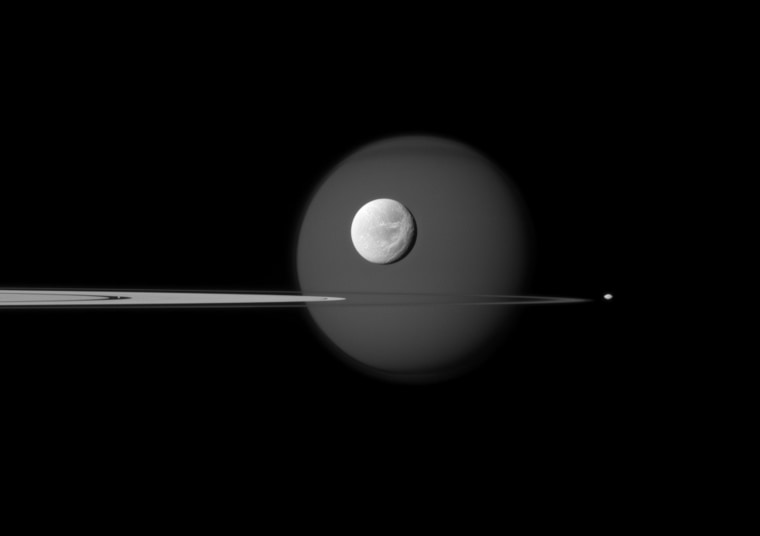
Quartet of moons
Four Saturnian moons, from tiny to huge, make an appearance amid the planet's rings in this composition from the Cassini orbiter, released Oct. 24. Bright Dione is in the foreground, with Titan in the background. The dot just to the right of Saturn's nearly edge-on rings is Pandora, and Pan is just a speck embedded within the rings, to the left of Titan and Dione.
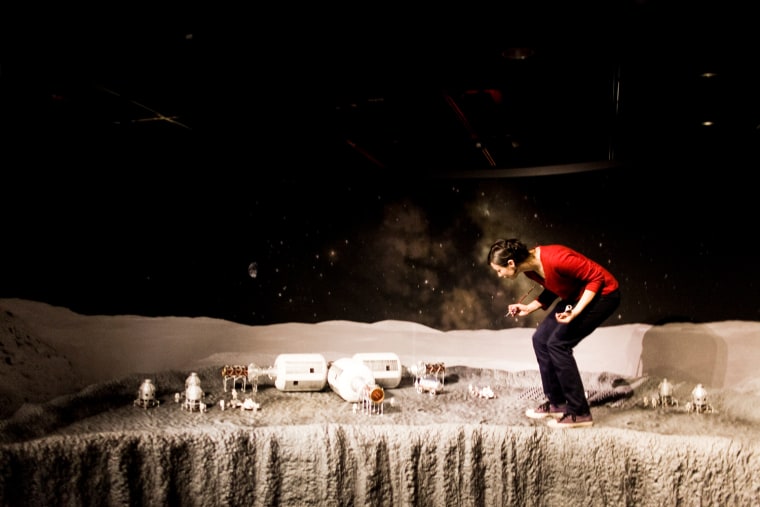
A little lunar base
Hillary Livingston adds the finishing touches to a scale-model lunar base camp in the "Beyond Planet Earth" exhibit at the American Museum of Natural History in New York on Nov. 10. The exhibition looks forward to the next 50 to 100 years of spaceflight, with the intention of fueling dreams of colonizing the moon and Mars.
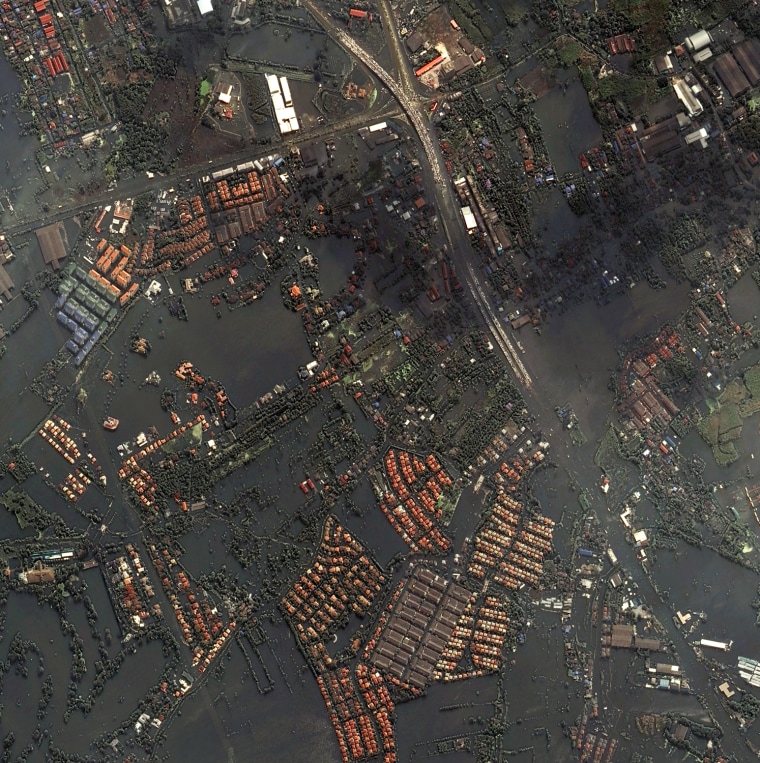

The Tarantula roars
About 2,400 massive stars in the center of the Tarantula Nebula, also known as 30 Doradus, are producing intense radiation and powerful winds as they blow off material. Multimillion-degree gas detected in X-rays (blue) by NASA's Chandra X-ray Observatory comes from the shock fronts formed by these stellar winds and by supernova explosions. This hot gas carves out gigantic bubbles in the surrounding cooler gas and dust, shown here in infrared emissions detected by the Spitzer Space Telescope (orange). This composite image of the nebula in the Large Magellanic Cloud was released on Nov. 10.
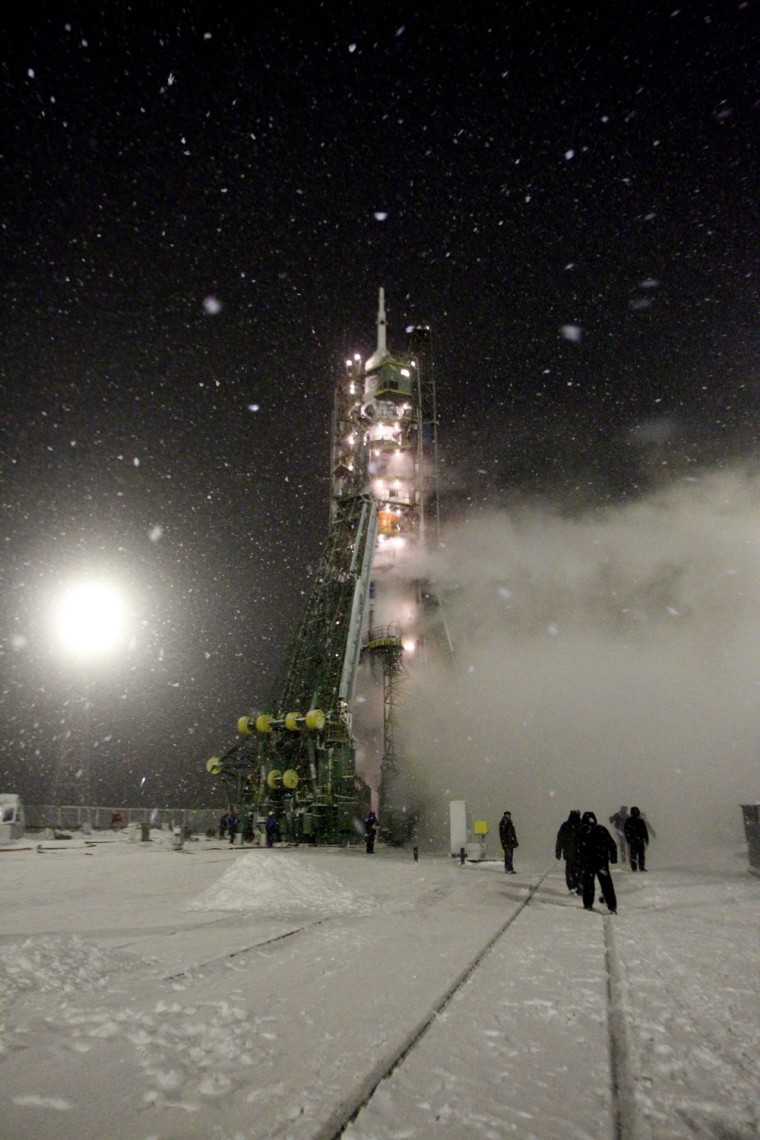
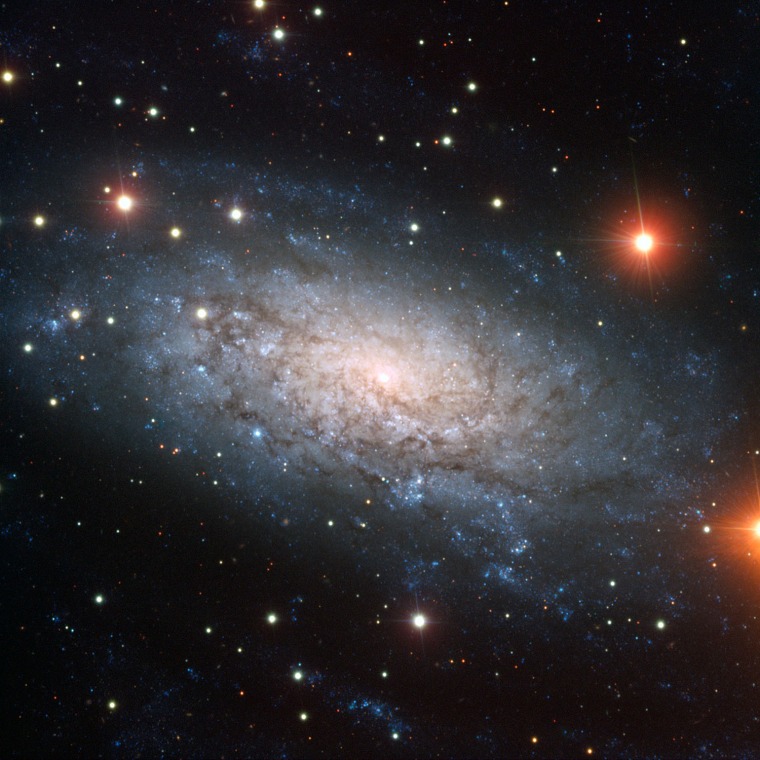
Freakishly flat
This image, from ESO's Very Large Telescope, shows a truly remarkable galaxy known as NGC 3621. Like other spirals, it has a flat disc permeated by dark lanes of material, with prominent spiral arms where young stars are forming in clusters (the blue dots seen in the image). But while most spiral galaxies have a central bulge, NGC 3621 doesn't. In this image, released Nov. 28, it is clear there's a brightening in the center but no actual bulge.
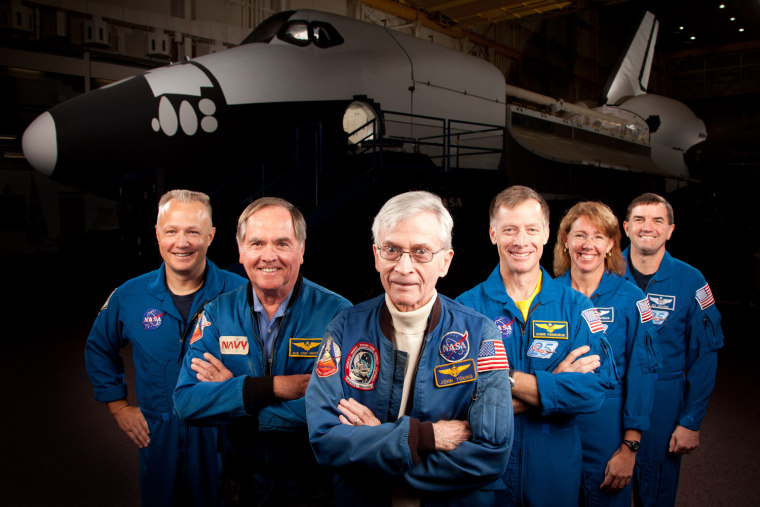
The first and the last
The astronauts who formed the crews of STS-1, the first space shuttle mission, and STS-135, the final shuttle mission, stand together for a group photo at NASA's Johnson Space Center on Nov. 2 in Houston. They are, from left, STS-135 pilot Doug Hurley, STS-1 pilot Robert Crippen, STS-1 commander John Young, STS-135 commander Chris Ferguson and STS-135 mission specialists Sandy Magnus and Rex Walheim.
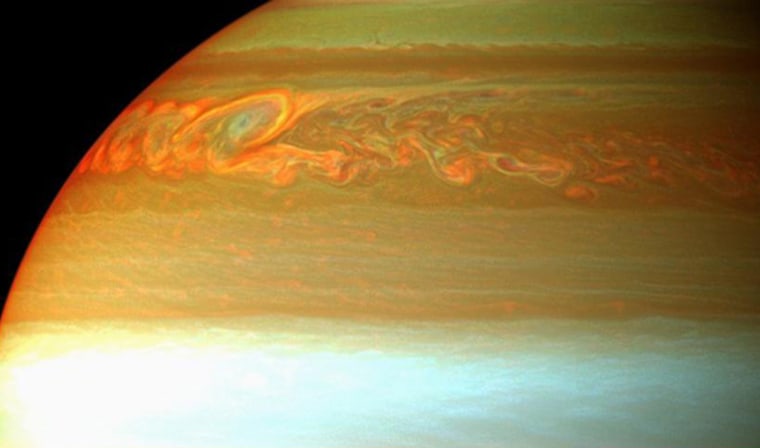
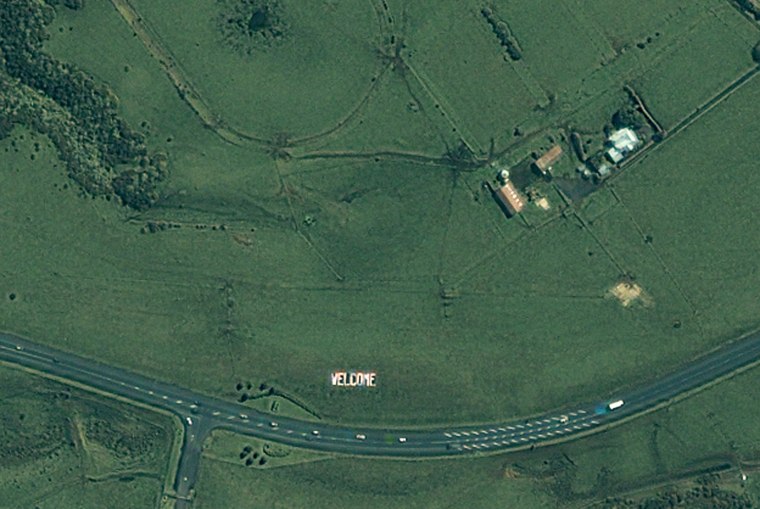
Welcome to the aliens
This satellite image shows a large "Welcome" sign near the airport for Auckland, New Zealand. The sign was constructed to welcome visitors attending the Rugby World Cup 2011 event, hosted by Auckland. The high-resolution image was collected on Sept. 19 by GeoEye's Ikonos satellite while flying 423 miles above Earth at an average speed of 17,000 mph.
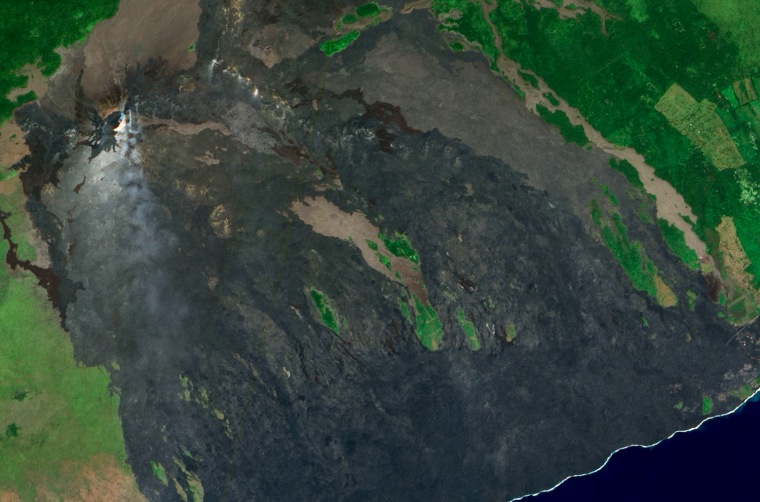
Go with the flow
Since it began in 1983, the eruption of Kilauea volcano has usually been centered at Pu'u 'O'o. Gray and brown lava flows radiate from the crater, with the varying shades due to differences in weathering, composition and the lava's initial temperature. This picture from NASA's EO-1 satellite shows the flow as of Oct. 29, with a light-colored plume rising from Pu'u 'O'o.
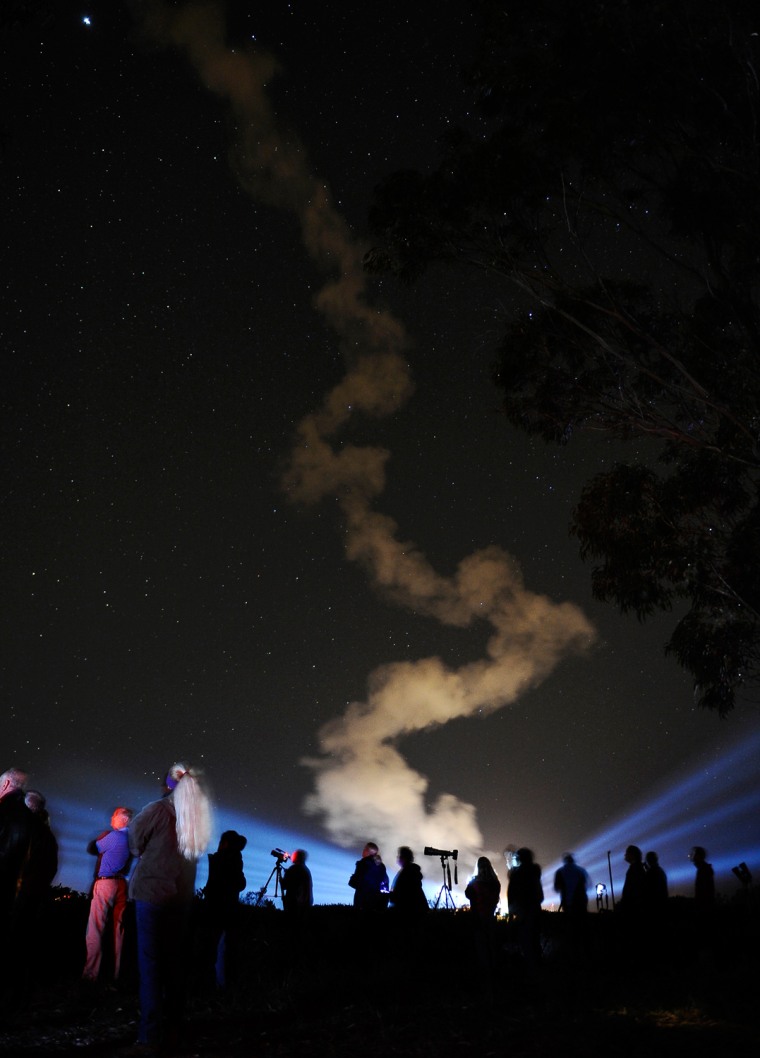
After the launch
A smoke trail hangs in the sky after the liftoff of a Delta 2 rocket from Vandenberg Air Force Base in California on Oct. 28. The rocket sent the NPP satellite into orbit to monitor long-term climate change and short-term weather conditions. The $1.5 billion NPP mission (National Polar-orbiting Operational Environmental Satellite System Preparatory Project) represents a critical first step in the development of a next-generation Earth-observing satellite system.